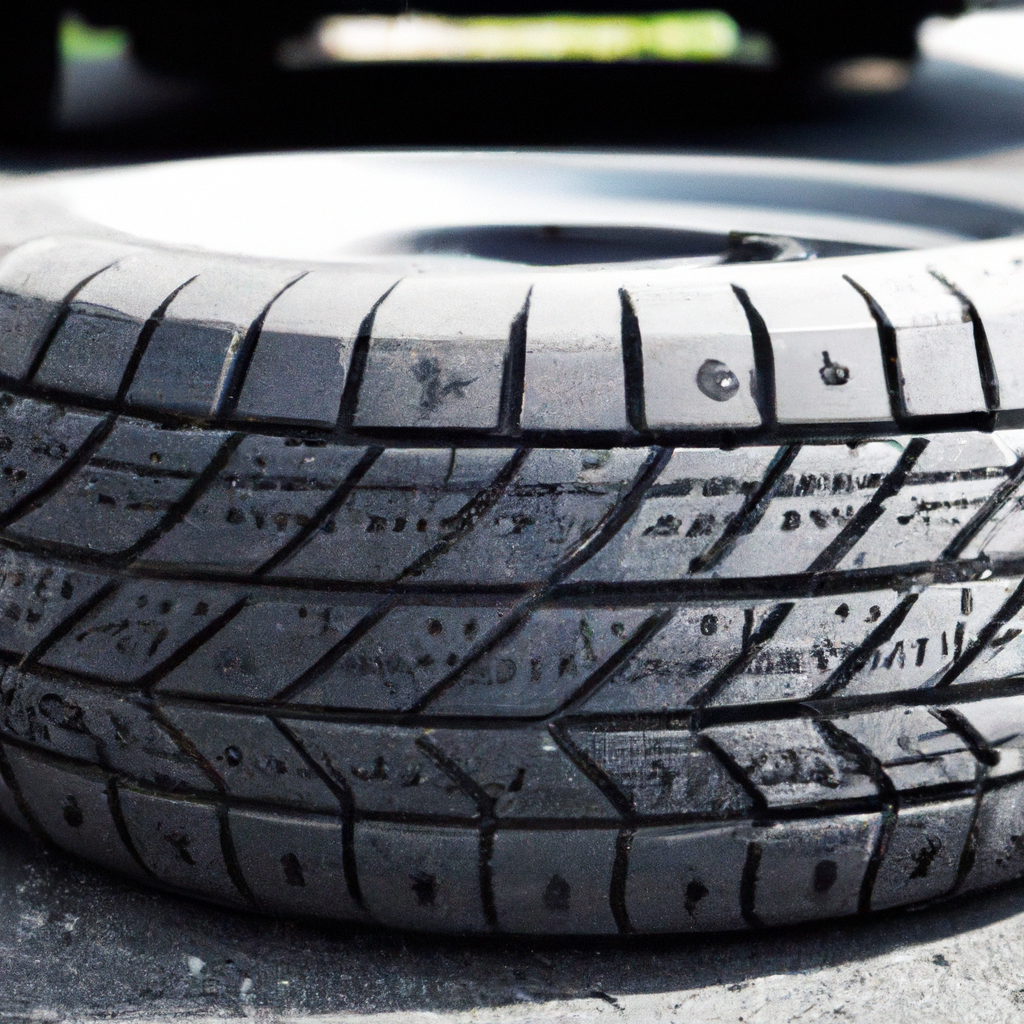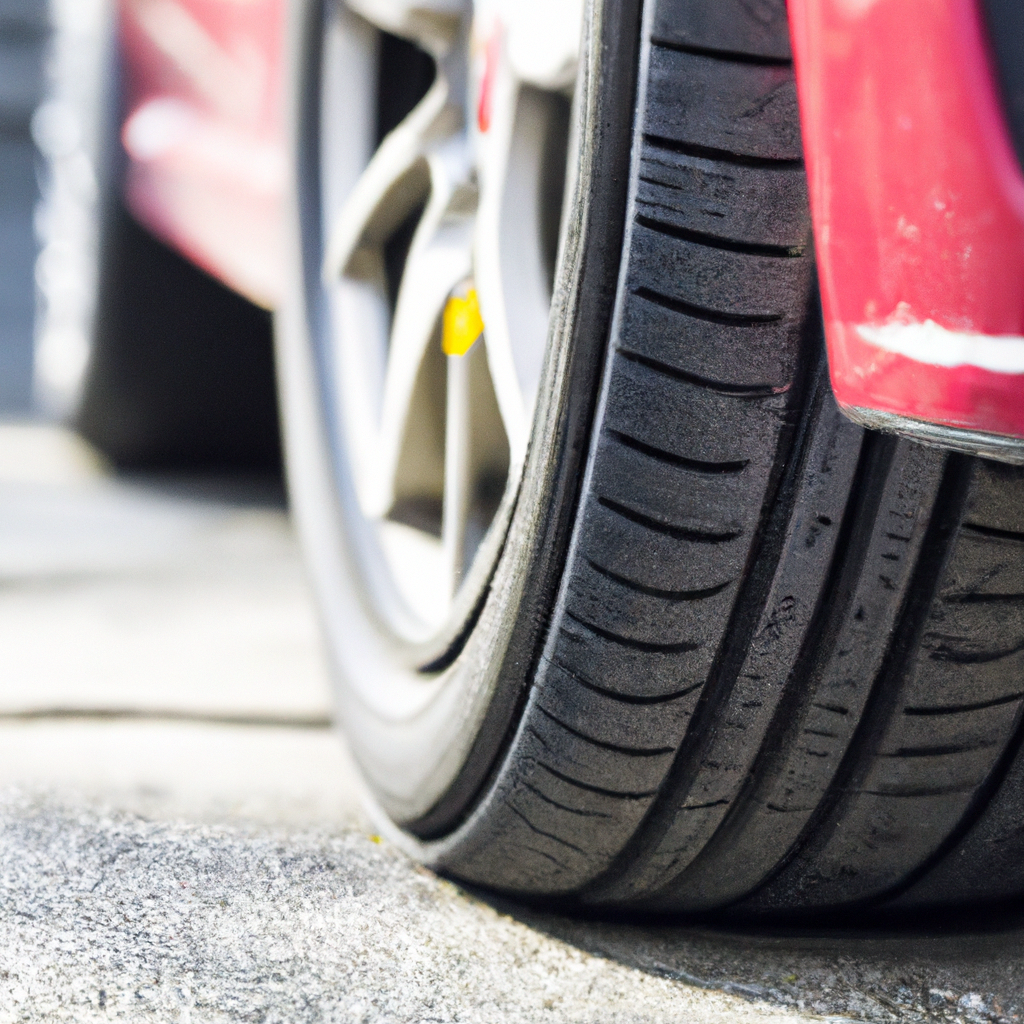Are run-flat tires the perfect solution for all types of vehicles? Are they a practical choice for both compact cars and large SUVs alike? These questions often arise when considering the benefits and drawbacks of run-flat tires. While they offer the advantage of allowing you to continue driving even after a puncture, there are certain factors to consider. From the capabilities and limitations of these unique tires to the specific requirements of different vehicle types, it’s essential to explore all the nuances before reaching an informed decision. So, let’s dive into the world of run-flat tires and uncover whether they are suitable for your vehicle. When it comes to tires, there are a variety of options available for different types of vehicles. One option that has gained popularity in recent years is run-flat tires. These tires are designed to keep you safe and on the road even if you experience a flat tire. While run-flat tires have several advantages, they may not be suitable for all types of vehicles. In this article, we will explore the advantages and disadvantages of run-flat tires, their performance in different weather conditions, and their suitability for various types of vehicles.

Advantages of Run-Flat Tires
Enhanced Safety
One of the key advantages of run-flat tires is the enhanced safety they provide. With a traditional tire, if you experience a flat tire while driving, you may be at risk of losing control of your vehicle. However, with run-flat tires, even if you experience a puncture, the tire is designed to support the weight of your vehicle, allowing you to drive to a safe location without losing control or risking an accident.
No Immediate Need for Spare Tires
Another advantage of run-flat tires is that they eliminate the immediate need for a spare tire. Traditional tires require you to stop and change the flat tire or call for roadside assistance. With run-flat tires, you can continue driving to a safe location or a nearby repair shop without the need for immediate intervention. This can save you time and reduce the inconvenience of being stranded on the side of the road.
Ability to Drive at Reduced Speeds
Run-flat tires also offer the ability to drive at reduced speeds even after a puncture. While traditional tires must be replaced immediately after a flat, run-flat tires allow you to continue driving at a reduced speed, typically up to 50 miles per hour, for a limited distance. This can be particularly beneficial if you are in a remote area or unable to immediately access a repair shop.
Minimal Vehicle Downtime
With run-flat tires, you can experience minimal vehicle downtime in the event of a flat tire. Instead of having to wait for a tow truck or arrange for a tire replacement, you can simply drive to a nearby repair shop at reduced speeds. This can save you time and allow you to quickly get back on the road.
Disadvantages of Run-Flat Tires
Limited Range and Speed
One of the disadvantages of run-flat tires is their limited range and speed capabilities after a puncture. While they allow you to continue driving, the distance and speed limitations can be a concern. Depending on the specific tire model and the severity of the puncture, run-flat tires typically have a range of 50 to 100 miles at reduced speeds. This means that if you are far away from a repair shop or in an area with limited services, you may still need to call for assistance.
Rougher Ride Quality
Run-flat tires are often criticized for their rougher ride quality compared to traditional tires. The stiffer sidewalls and reinforced construction that allow the tire to support the weight of the vehicle after a puncture can result in a harsher ride. This can be particularly noticeable on rough or uneven road surfaces, leading to a less comfortable driving experience.
Higher Cost
Another disadvantage of run-flat tires is their higher cost compared to traditional tires. The technology and materials used in manufacturing run-flat tires make them more expensive to produce, resulting in a higher price tag for consumers. In addition to the initial cost, run-flat tires may also result in increased maintenance and replacement costs over the lifespan of the tire.
Limited Availability
Run-flat tires may also have limited availability, depending on your location and the specific tire model you require. While they are becoming increasingly popular, not all tire manufacturers produce run-flat tires in all sizes and models. This can make it more difficult to find the right tire for your vehicle, especially if you have unique size requirements.
Performance in Different Weather Conditions
Dry Road Performance
In terms of dry road performance, run-flat tires generally perform well. The reinforced sidewalls provide stability and good handling, allowing for confident driving on dry surfaces. However, it is important to note that the specific performance of run-flat tires can vary depending on the brand and model.
Wet Road Performance
On wet roads, run-flat tires offer good traction and grip, just like traditional tires. The tread patterns and design features of run-flat tires are specifically engineered to provide excellent performance in wet conditions, helping to maintain control and reduce the risk of hydroplaning.
Snow and Ice Performance
When it comes to winter conditions, run-flat tires may not be the best choice. While they provide some level of traction on snowy and icy roads, run-flat tires are not as effective as dedicated winter tires. The stiffer sidewalls and compromised tread design may limit their ability to grip and navigate through deep snow or icy surfaces. For areas with severe winter conditions, it is recommended to use dedicated winter tires for optimal performance.
Suitability for Passenger Cars
Compact and Mid-Size Cars
Run-flat tires are suitable for compact and mid-size cars, providing enhanced safety and convenience. These vehicles often do not have ample storage space for a spare tire, making run-flat tires a practical choice. The ability to drive to a repair shop without the need for immediate replacement is particularly beneficial for daily commuting and urban driving.
Sports Cars
Sports cars can also benefit from run-flat tires, especially those equipped with performance-oriented suspension and handling systems. The reinforced sidewalls and improved stability offered by run-flat tires can enhance the overall performance and cornering capabilities of sports cars. However, it is important to consider the ride quality impact and any potential trade-offs in comfort.
Luxury Cars
Luxury cars are another category that can benefit from the convenience and safety of run-flat tires. Many luxury vehicles feature advanced technology and comfort features that may be compromised by a traditional spare tire. With run-flat tires, owners can enjoy peace of mind knowing that they can continue driving to a safe location or repair shop in the event of a puncture.

Suitability for SUVs and Trucks
Off-Roading Capability
Run-flat tires are generally not recommended for off-roading or extreme driving conditions. The design and construction of run-flat tires are focused on providing safety and limited mobility after a puncture, rather than enhanced off-road performance. If you frequently drive off-road or in rugged terrain, it is advisable to use dedicated off-road tires that are designed for optimal traction, durability, and performance in those conditions.
Payload Capacity
SUVs and trucks often have the need to carry heavy loads or tow trailers. Run-flat tires may not be suitable for these applications as the reinforced sidewalls and construction may not be able to handle the increased weight. It is important to check the load capacity rating of run-flat tires to ensure they can safely support the demands of your vehicle.
Driving Range
When it comes to driving range, run-flat tires can offer peace of mind for SUV and truck owners. The ability to continue driving to a safe location or repair shop after a puncture can be particularly beneficial when traveling long distances or in remote areas with limited services. However, it is important to consider the limited range and speed capability of run-flat tires and plan accordingly for extended trips.
Compatibility with Electric Vehicles
Battery Efficiency
Run-flat tires can have an impact on the energy efficiency of electric vehicles. The stiffer sidewalls and increased rolling resistance may result in slightly reduced battery range compared to traditional tires. While the difference may not be significant, it is important to consider this factor when choosing tires for your electric vehicle.
Range Considerations
The limited range of run-flat tires after a puncture can be of concern when it comes to electric vehicles. Electric vehicles already have limited range compared to gasoline-powered vehicles, and the reduced range of run-flat tires can further limit the overall driving distance between charges. It is advisable to carefully consider the implications of using run-flat tires on the range of your electric vehicle and plan charging stops accordingly.

Run-Flat Tires and Performance Vehicles
Handling and Cornering
For performance vehicles, handling and cornering capabilities are crucial. Run-flat tires with their reinforced sidewalls and improved stability can contribute to enhanced handling and cornering performance. The ability to maintain control and stability even after a puncture can provide added confidence when pushing the limits of the vehicle.
High-Speed Performance
Run-flat tires are designed to allow you to drive at reduced speeds after a puncture, but they may not be suitable for sustained high-speed driving. The compromised sidewalls and construction may not provide the same level of stability and performance as traditional tires at high speeds. It is important to consider this limitation when using run-flat tires on performance vehicles and adjust driving habits accordingly.
Run-Flat Tires for Commercial Vehicles
Delivery Trucks
Run-flat tires can be a valuable option for delivery trucks that operate in urban areas where timely deliveries are crucial. The ability to continue driving to a repair shop without the need for immediate intervention can help minimize disruption to delivery schedules and reduce vehicle downtime.
Buses and Coaches
Buses and coaches often carry a large number of passengers and operate in areas with limited support services. Run-flat tires can provide added safety and convenience by allowing drivers to continue driving to a safe location or repair shop in the event of a puncture, reducing the inconvenience for passengers.
Fleet Vehicles
Fleet vehicles, which include taxis, rental cars, and corporate vehicles, can benefit from the use of run-flat tires. The enhanced safety, reduced downtime, and increased convenience provided by run-flat tires can result in cost savings and improved customer satisfaction for fleet operators.

Run-Flat Tires and Motorcycles
Motorcycle Safety Considerations
While run-flat tires are available for motorcycles, they are not as common as for other vehicle types. Motorcycle tires are designed differently than car tires due to the different weight distribution and handling characteristics of motorcycles. The limited availability and potential impact on handling and performance should be carefully considered when deciding to use run-flat tires on motorcycles, especially for sport bikes where cornering and stability are crucial.
Ride Quality Impact
Run-flat tires can have an impact on the ride quality and comfort of motorcycles. The stiffer sidewalls and compromised flexibility may result in a rougher ride compared to traditional motorcycle tires. The trade-off between enhanced safety and ride comfort should be evaluated based on individual preferences and riding conditions.
Motorcycle Tire Durability
Motorcycles are more susceptible to tire punctures due to their smaller size and lower weight compared to cars. Run-flat tires can provide added peace of mind by allowing riders to continue riding to a repair shop or safe location in the event of a puncture. However, it is important to consider the limited range and speed capability of run-flat tires for motorcycles and plan accordingly for longer rides.
Replacement and Repair Considerations
Replacement Cost
When it comes to replacing run-flat tires, the cost can be higher compared to traditional tires. The technology and materials used in manufacturing run-flat tires contribute to the higher price tag. Additionally, the limited availability of run-flat tires in certain sizes and models may result in higher costs due to lower competition.
Repairability
Repairing run-flat tires may not always be possible or recommended. The reinforced sidewalls and construction of run-flat tires may make them more difficult to repair compared to traditional tires. It is important to consult with a tire specialist or manufacturer to determine the feasibility and safety of repairing a run-flat tire.
In conclusion, run-flat tires offer enhanced safety and convenience for drivers, allowing them to continue driving even after a puncture. However, they may not be suitable for all types of vehicles. Consider factors such as limited range and speed capabilities, ride quality impact, and the specific needs of your vehicle before opting for run-flat tires.


